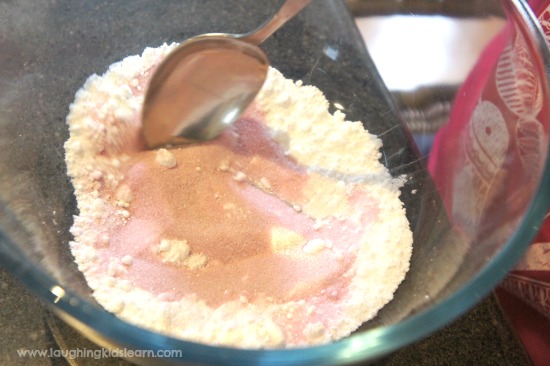This post follows on from the previous few posts where:
- I reviewed the scriptures for this week's Come Follow Me Primary lesson. (link)
- I then brainstormed various science themes that could link to the scriptures. (link)
- Yesterday I worked up one of those themes into a potential lesson plan. (link)
In this post, I'll provide a concise lesson plan for teachers to use if they find this useful. The first part of this post (in green) is an overview of the lesson aims, and the second part (in yellow) is the actual lesson plan that you can use.
Fun with fizzy things. Photo by Sharon McCutcheon on Unsplash
Overview
What's the lesson about?
It's about Ruth, a woman whose family moves from Bethlehem to Moab some time after the period of Judges, and experiences tragedy when her husband, father-in-law and brother-in-law all pass away. She's left with her mother-in-law Naomi, and sister-in-law Orpah. Ruth and Naomi stay close together as they relocate back to Israel, but they're both hard up. Ruth takes up gleaning (collecting scraps from the harvest) at a local farm, and is taken under the wing of the farmer Boaz. Boaz shows Ruth kindness, looks out for her, and eventually marries her.
What's the spiritual theme?
The spiritual theme is on finding the bright side from unpleasant experiences.
What's the science topic?
We'll be investigating acids and bases, and doing a few tasting experiments with these. In the first, we'll let the kids try out dipping bread in vinegar, to mimic a meal that Boaz offered Ruth. In the second, we'll try and make some sherbet candy by mixing an acid and an alkali (also known as a base).
How does the science relate to the spiritual theme?
The idea is to show that when you take something sour (an acid, which is analogous for a bad experience), and you combine it with something calming (a base, which is analogous for the Holy Spirit), then you can get really vibrant, exciting results (analogous for seeing light in your life again).
What will make it fun?
This is a very interactive hands-on lesson, which the kids often get involved with.
Lesson Plan
Here's what you'll need in advance:
- Bread and balsamic vinegar, and plates to serve
- Citric acid (available in pharmacies)
- Baking soda
- Icing sugar
- Jelly crystals
- A teaspoon
- A cup or mixing bowl
- Paper and colouring pencils.
- A set of scriptures (Old Testament)
The plan for the lesson is as follows:
- Introduce the Book of Ruth. Tell the story of the tragedy of Ruth 1 when the family experiences all the menfolk passing away, up to the point where Naomi and Ruth move back.
- Read Ruth 2:2-3 and talk about what gleaning meant. (It was the act of gathering scraps in the farm field after the main crop had been harvested. It involved picking up the odd ear of barley or wheat that was left on the ground.)
- Take several strips of paper and scatter them on the ground. On some of them, write "Ruth 2:14". Ask the children to pick out the strips with the writing, which will be scarce. This should give some idea of what gleaning was like.
- Read Ruth 2:14:
- Talk about what vinegar is and what it tastes like. Ask the children if dipping bread into vinegar sounds nice.
- Hand out some plates, and pour onto each a small amount of balsamic vinegar. Give the children some pieces of bread, and have them dip the bread into the vinegar and taste it. (Take care not to drop any of the vinegar onto their Sunday best, as the stains will be hard to remove!)
- Ask them what they thought. Hopefully some of them found the experience nicer than they anticipated after reading the scriptures.
- Talk about how bad things happen in our lives. What tools do the children have available to them to help us during these times? Can anyone provide any personal testimony about when doing things like praying, reading scriptures, fasting etc made a difference to their lives during difficult times?
- Talk about how acids are substances that are sour to the taste, and normally unpleasant. We're going to do an experiment with citric acid, which is a sour acid. They can taste a tiny dab to see for themselves.
- Talk about how the opposite of an acid is a base, and bases are calming, boring substances like chalk or baking soda. (Whilst we don't advocate tasting chalk, they can try a tiny dab of the baking soda and see what it tastes like.)
- When you mix a sour acid to calming base, what do you think will happen?
- Get a mixing bowl, and have the children add in a teaspoon of citric acid (something sour), baking soda, icing sugar and jelly crystals. This will make a fizzy sherbet mix. Let the kids try this. Hopefully it'll taste nicer than the plain ingredients, and they should notice the fizzyness! Sherbet mix. Image from https://laughingkidslearn.com/how-to-make-sherbet/
- Talk about how adding something calming to the sour acid made the mixture vibrant and fizzy and exciting.
- In the case of the story of Ruth, Ruth's experiences were sour and sad. But she met Boaz, who was a steady influence, and was guided by the calming nature of the Holy Spirit. When they met, they liked each other, got married and had a child. Ruth and Boaz. Image from https://www.churchofjesuschrist.org/study/manual/old-testament-stories-2022/ruth-and-naomi?lang=eng
- Summary of the lesson.
- The children should have learnt about the story of Ruth.
- Things that sound bad aren't always as bad as they seem. (Recall the bread and vinegar.)
- When sad or bad things happen, they can be made better again, if you remember to invite the Holy Spirit to support you. (Recall the sherbet experiment when we mixed the sour acid with the calming baking soda.)
- Closing prayer
I hope you find this lesson plan useful, whether it's for using for your lesson as-is, or for inspiration for putting your own touch on the lesson. If you have any comments or feedback, feel free to reply in the comments below, or on the Twitter thread.





Comments
Post a Comment